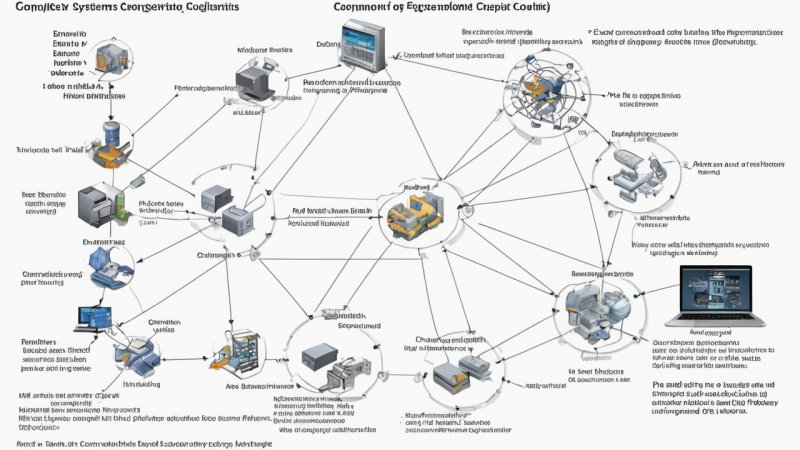Systems engineering is a multidisciplinary approach that integrates various components and disciplines to create complex systems that meet specified requirements. As technology advances and the complexity of projects increases, the need for effective systems engineering has become more critical than ever. This article delves into the fundamental principles of systems engineering, exploring its processes, methodologies, and applications across various fields, including aerospace, automotive, and software development.
What is Systems Engineering?
At its core, systems engineering is about understanding how different parts of a system interact and work together to achieve a common goal. It encompasses the entire lifecycle of a system, from conception and design to production, operation, and decommissioning. This holistic view ensures that all aspects of a system are considered, including technical, economic, and social factors.
Historical Context
The roots of systems engineering can be traced back to the early 20th century, with significant contributions from various fields, including military engineering and project management. The discipline gained formal recognition during World War II, when complex military systems required integrated approaches to manage their development and deployment.
Key Principles of Systems Engineering
Understanding the principles of systems engineering is essential for effectively managing complex projects. Here are some of the key principles:
- Holistic View: Systems engineering emphasizes the importance of viewing a system as a whole rather than focusing on individual components. This perspective helps identify interactions and dependencies that may not be apparent when examining parts in isolation.
- Lifecycle Approach: Systems engineering considers the entire lifecycle of a system, ensuring that all phases—from conception to disposal—are planned and managed effectively.
- Stakeholder Involvement: Engaging stakeholders throughout the process is crucial. Their needs and expectations must be understood and incorporated into the system design to ensure its success.
- Iterative Development: Systems engineering often involves iterative processes, allowing for continuous refinement and improvement based on feedback and changing requirements.
- Risk Management: Identifying and managing risks is a fundamental aspect of systems engineering, ensuring that potential issues are addressed proactively.
The Systems Engineering Process
The systems engineering process typically follows several key steps, which may vary depending on the specific project or industry. The following outlines a general framework:
1. Requirements Definition
The first step involves gathering and defining the requirements of the system. This phase includes identifying stakeholder needs, establishing system goals, and documenting specifications. Clear requirements are essential for guiding the design and development process.
2. System Architecture
Once requirements are established, the next step is to develop a system architecture. This involves creating a high-level design that outlines the system's components, their interactions, and how they will work together to fulfill the requirements.
3. Design and Development
In this phase, the detailed design of each component is developed. Engineers and designers work collaboratively to ensure that all parts fit into the overall architecture and meet the specified requirements.
4. Integration and Testing
After the components are developed, they are integrated into a complete system. This phase includes rigorous testing to ensure that the system functions as intended and meets all requirements.
5. Deployment and Operation
Once testing is complete, the system is deployed for use. This phase involves training users, providing support, and monitoring system performance to ensure it operates effectively.
6. Maintenance and Upgrades
Systems engineering does not end with deployment. Ongoing maintenance and upgrades are necessary to adapt to changing requirements and improve system performance.
Applications of Systems Engineering
Systems engineering is applied across various industries, each with unique challenges and requirements. Here are some notable applications:
Aerospace
The aerospace industry relies heavily on systems engineering to manage complex projects, such as the design and development of aircraft and spacecraft. The integration of various systems, including avionics, propulsion, and structural components, requires a holistic approach to ensure safety and performance.
Automotive
As vehicles become increasingly sophisticated, with advanced driver-assistance systems and electric powertrains, systems engineering plays a vital role in ensuring that all components work together seamlessly. This includes everything from software integration to safety compliance.
Software Development
In software engineering, systems engineering principles help manage the complexity of software systems, ensuring that they meet user needs and function reliably. Agile methodologies often incorporate systems engineering principles to facilitate iterative development and stakeholder engagement.
Challenges in Systems Engineering
Despite its many benefits, systems engineering faces several challenges:
- Complexity: As systems become more complex, managing interactions and dependencies becomes increasingly difficult.
- Stakeholder Alignment: Ensuring that all stakeholders have a shared understanding of requirements and goals can be challenging, particularly in large projects with diverse interests.
- Rapid Technological Change: The fast pace of technological advancement can make it difficult to keep systems up-to-date and relevant.
Future Trends in Systems Engineering
As technology continues to evolve, several trends are shaping the future of systems engineering:
1. Increased Automation
Automation tools are being developed to streamline various aspects of systems engineering, from requirements management to testing. These tools can help reduce human error and improve efficiency.
2. Model-Based Systems Engineering (MBSE)
MBSE is gaining popularity as a way to create and manage system models throughout the lifecycle. This approach enhances communication and collaboration among stakeholders and provides a clearer understanding of system behavior.
3. Emphasis on Sustainability
With growing concerns about environmental impact, systems engineering is increasingly focusing on sustainable practices and solutions. This includes designing systems that minimize resource use and environmental harm.
Conclusion
Systems engineering is a vital discipline that addresses the complexities of modern systems. By applying its principles and processes, organizations can create effective, reliable, and sustainable solutions that meet stakeholder needs. As technology continues to advance, the role of systems engineering will only become more critical in ensuring that systems are designed, developed, and maintained effectively. Understanding these principles is essential for anyone involved in the development of complex systems, whether in aerospace, automotive, software, or other industries.






